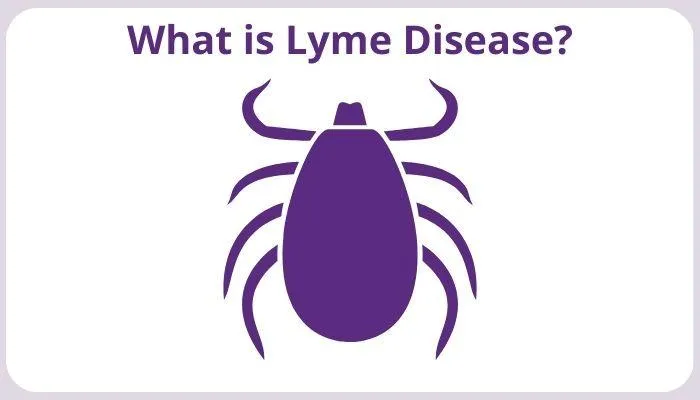Every child's well-being matters.
Best Practice Ideas for Safeguarding Articles
Quick Access

What is Lyme Disease?
What is Lyme Disease? 🦠
Let’s take a look at the signs, symptoms, treatments, complications and preventions, so that you can take action in your early years provision when needed.
Lyme disease is an infectious disease that has garnered significant attention due to its increasing prevalence and complex nature.
Caused by the bacterium Borrelia burgdorferi, Lyme disease is primarily transmitted to humans through the bite of infected black-legged ticks, also known as deer ticks.
One of the defining features of Lyme disease is the characteristic "bull's-eye" rash, known as erythema migrans, which appears around the site of the tick bite. This rash typically starts as a small red spot and expands outward, creating a pattern that resembles a target.
It is important to know that not everyone with Lyme disease will develop this rash. Some may experience a more subtle or atypical rash, or none at all.
In addition to the rash, early Lyme disease symptoms can include:
fever
chills
headache
fatigue
muscle and joint aches
swollen lymph nodes
These symptoms often resemble those of other common illnesses, which can make Lyme disease challenging to diagnose, especially in its early stages.
DIAGNOSIS
Diagnosing Lyme disease involves clinical evaluation and lab tests, with doctors looking at a patient's history of tick exposure and possibly ordering blood tests to detect antibodies.
These tests aren't always conclusive, and their accuracy can depend on timing, which makes early diagnosis and treatment vital.
COMPLICATIONS
If Lyme disease isn't treated quickly, it can lead to more severe and debilitating stages:
- joint pain and swelling known as Lyme arthritis, often affecting the knees
- neurological issues, like meningitis, facial palsy, or peripheral neuropathy, can cause difficulty moving facial muscles or abnormal sensations in the limbs
- in some cases, it may affect the heart, leading to Lyme carditis and irregular heartbeats.
Treatment focuses on the underlying infection with antibiotics.
PREVENTION
✔ Wear trousers and long sleeves in long grass and wooded areas
✔ Consider an insect repellent containing DEET
✔ Always check skin for ticks after outdoor activities - ticks usually need to be attached for 24 to 48 hours to transmit the bacteria, so prompt removal reduces the risk.
Would all practitioners at your setting know how to record and report signs of Lyme disease? What if a family doesn’t take your concerns seriously?
AUTHOR:- Iona has nearly 10 years of experience supporting nurseries and childminders in curriculum planning, leadership, and safeguarding. Her writing is informed by public information and sector insight, aiming to provide accessible, practical support for professionals working with children. She is part of the On the Button team, helping deliver Well-being, Safeguarding and Complaint Management Software that empowers practitioners to identify concerns early and act confidently.
On the Button provides innovative software tailored to the needs of the early years sector, with a strong focus on EYFS well-being and early years safeguarding. Our tools help senior practitioners to confidently track concerns, maintain robust records, and respond effectively — all while meeting statutory guidance. From early years complaint management to team-wide safeguarding alerts, our platform puts children's safety and emotional health first.
Quick Access

What is Lyme Disease?
What is Lyme Disease? 🦠
Let’s take a look at the signs, symptoms, treatments, complications and preventions, so that you can take action in your early years provision when needed.
Lyme disease is an infectious disease that has garnered significant attention due to its increasing prevalence and complex nature.
Caused by the bacterium Borrelia burgdorferi, Lyme disease is primarily transmitted to humans through the bite of infected black-legged ticks, also known as deer ticks.
One of the defining features of Lyme disease is the characteristic "bull's-eye" rash, known as erythema migrans, which appears around the site of the tick bite. This rash typically starts as a small red spot and expands outward, creating a pattern that resembles a target.
It is important to know that not everyone with Lyme disease will develop this rash. Some may experience a more subtle or atypical rash, or none at all.
In addition to the rash, early Lyme disease symptoms can include:
fever
chills
headache
fatigue
muscle and joint aches
swollen lymph nodes
These symptoms often resemble those of other common illnesses, which can make Lyme disease challenging to diagnose, especially in its early stages.
DIAGNOSIS
Diagnosing Lyme disease involves clinical evaluation and lab tests, with doctors looking at a patient's history of tick exposure and possibly ordering blood tests to detect antibodies.
These tests aren't always conclusive, and their accuracy can depend on timing, which makes early diagnosis and treatment vital.
COMPLICATIONS
If Lyme disease isn't treated quickly, it can lead to more severe and debilitating stages:
- joint pain and swelling known as Lyme arthritis, often affecting the knees
- neurological issues, like meningitis, facial palsy, or peripheral neuropathy, can cause difficulty moving facial muscles or abnormal sensations in the limbs
- in some cases, it may affect the heart, leading to Lyme carditis and irregular heartbeats.
Treatment focuses on the underlying infection with antibiotics.
PREVENTION
✔ Wear trousers and long sleeves in long grass and wooded areas
✔ Consider an insect repellent containing DEET
✔ Always check skin for ticks after outdoor activities - ticks usually need to be attached for 24 to 48 hours to transmit the bacteria, so prompt removal reduces the risk.
Would all practitioners at your setting know how to record and report signs of Lyme disease? What if a family doesn’t take your concerns seriously?
AUTHOR:- Iona has nearly 10 years of experience supporting nurseries and childminders in curriculum planning, leadership, and safeguarding. Her writing is informed by public information and sector insight, aiming to provide accessible, practical support for professionals working with children. She is part of the On the Button team, helping deliver Well-being, Safeguarding and Complaint Management Software that empowers practitioners to identify concerns early and act confidently.
On the Button provides innovative software tailored to the needs of the early years sector, with a strong focus on EYFS well-being and early years safeguarding. Our tools help senior practitioners to confidently track concerns, maintain robust records, and respond effectively — all while meeting statutory guidance. From early years complaint management to team-wide safeguarding alerts, our platform puts children's safety and emotional health first.

What is Lyme Disease?
What is Lyme Disease? 🦠
Let’s take a look at the signs, symptoms, treatments, complications and preventions, so that you can take action in your early years provision when needed.
Lyme disease is an infectious disease that has garnered significant attention due to its increasing prevalence and complex nature.
Caused by the bacterium Borrelia burgdorferi, Lyme disease is primarily transmitted to humans through the bite of infected black-legged ticks, also known as deer ticks.
One of the defining features of Lyme disease is the characteristic "bull's-eye" rash, known as erythema migrans, which appears around the site of the tick bite. This rash typically starts as a small red spot and expands outward, creating a pattern that resembles a target.
It is important to know that not everyone with Lyme disease will develop this rash. Some may experience a more subtle or atypical rash, or none at all.
In addition to the rash, early Lyme disease symptoms can include:
fever
chills
headache
fatigue
muscle and joint aches
swollen lymph nodes
These symptoms often resemble those of other common illnesses, which can make Lyme disease challenging to diagnose, especially in its early stages.
DIAGNOSIS
Diagnosing Lyme disease involves clinical evaluation and lab tests, with doctors looking at a patient's history of tick exposure and possibly ordering blood tests to detect antibodies.
These tests aren't always conclusive, and their accuracy can depend on timing, which makes early diagnosis and treatment vital.
COMPLICATIONS
If Lyme disease isn't treated quickly, it can lead to more severe and debilitating stages:
- joint pain and swelling known as Lyme arthritis, often affecting the knees
- neurological issues, like meningitis, facial palsy, or peripheral neuropathy, can cause difficulty moving facial muscles or abnormal sensations in the limbs
- in some cases, it may affect the heart, leading to Lyme carditis and irregular heartbeats.
Treatment focuses on the underlying infection with antibiotics.
PREVENTION
✔ Wear trousers and long sleeves in long grass and wooded areas
✔ Consider an insect repellent containing DEET
✔ Always check skin for ticks after outdoor activities - ticks usually need to be attached for 24 to 48 hours to transmit the bacteria, so prompt removal reduces the risk.
Would all practitioners at your setting know how to record and report signs of Lyme disease? What if a family doesn’t take your concerns seriously?
AUTHOR:- Iona has nearly 10 years of experience supporting nurseries and childminders in curriculum planning, leadership, and safeguarding. Her writing is informed by public information and sector insight, aiming to provide accessible, practical support for professionals working with children. She is part of the On the Button team, helping deliver Well-being, Safeguarding and Complaint Management Software that empowers practitioners to identify concerns early and act confidently.
On the Button provides innovative software tailored to the needs of the early years sector, with a strong focus on EYFS well-being and early years safeguarding. Our tools help senior practitioners to confidently track concerns, maintain robust records, and respond effectively — all while meeting statutory guidance. From early years complaint management to team-wide safeguarding alerts, our platform puts children's safety and emotional health first.
Quality Early Years Ltd.,
Dickens House,
Guithavon Street,
Witham, Essex,
England, CM8 1BJ
© Quality Early Years Ltd 2025
On the Button are Finalists for 3/3 Early Years Awards!
Find On the Button
on Social Media

